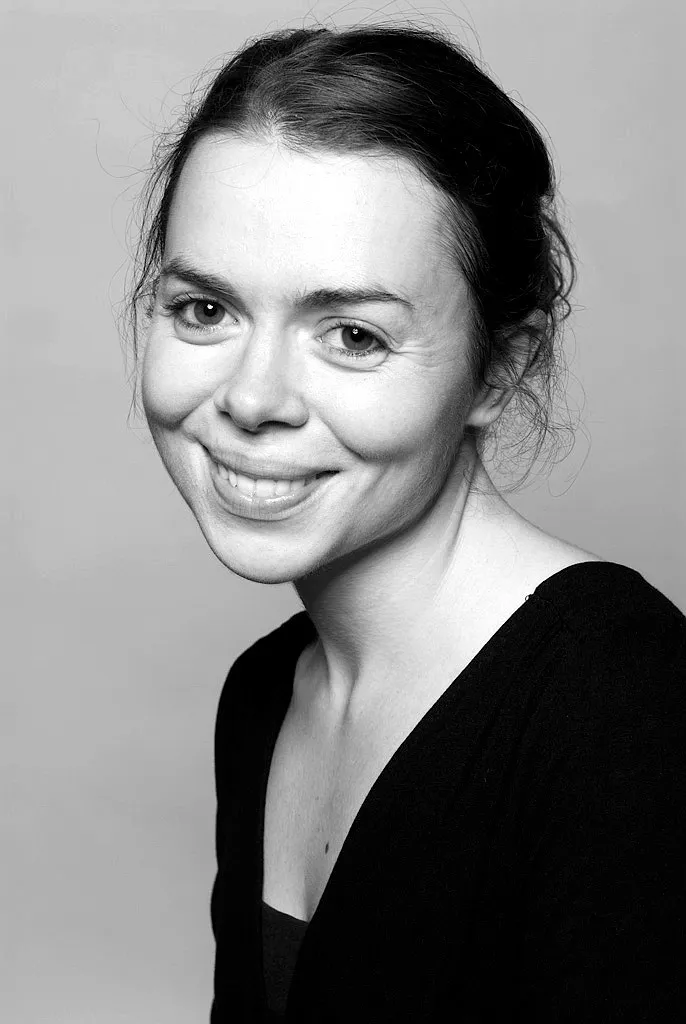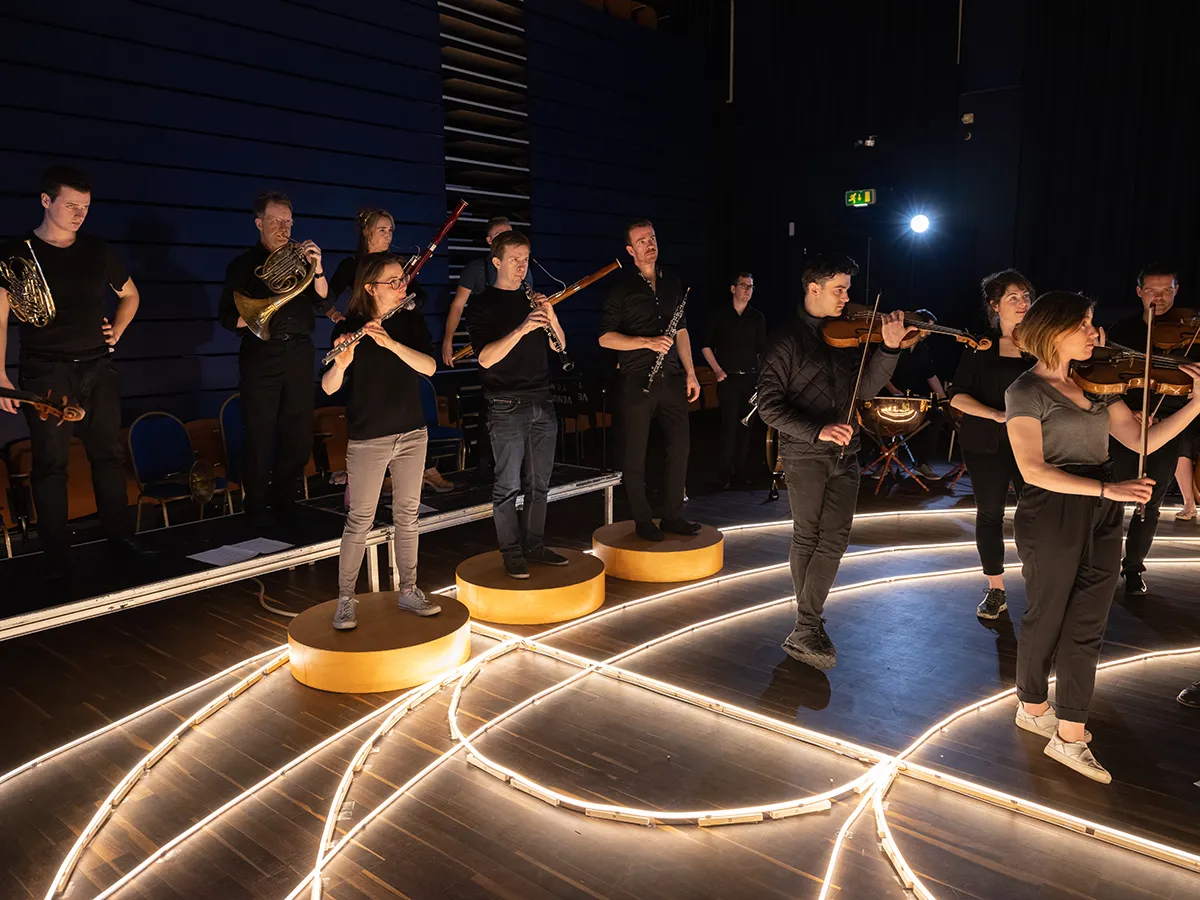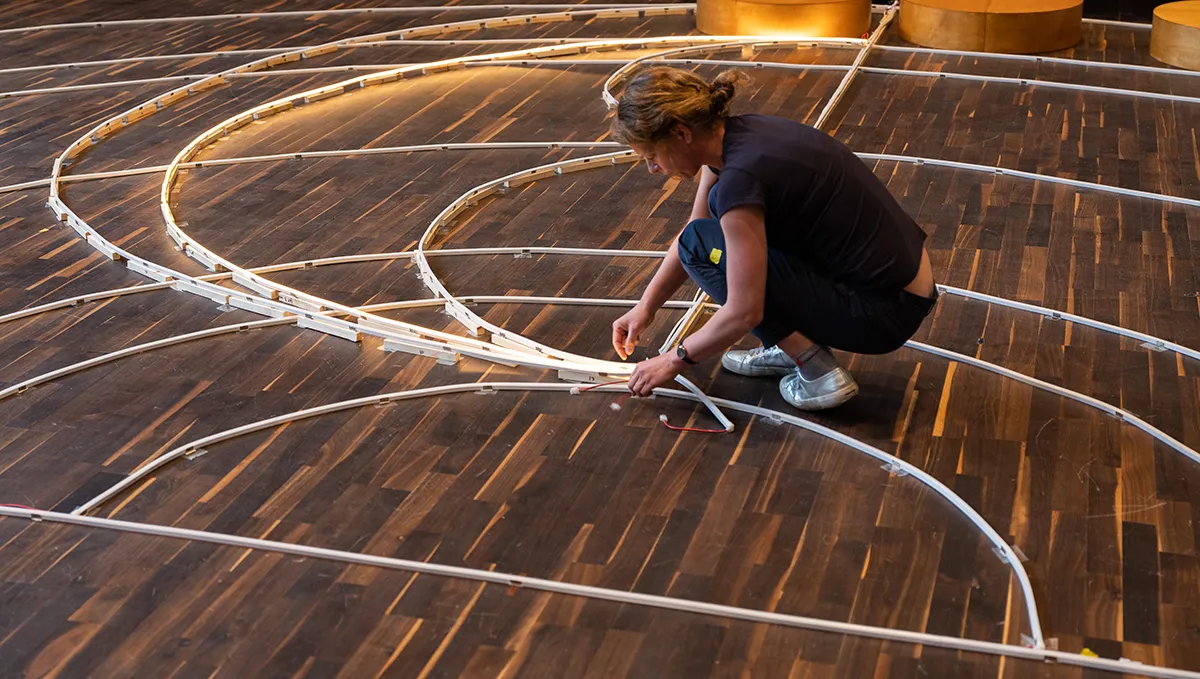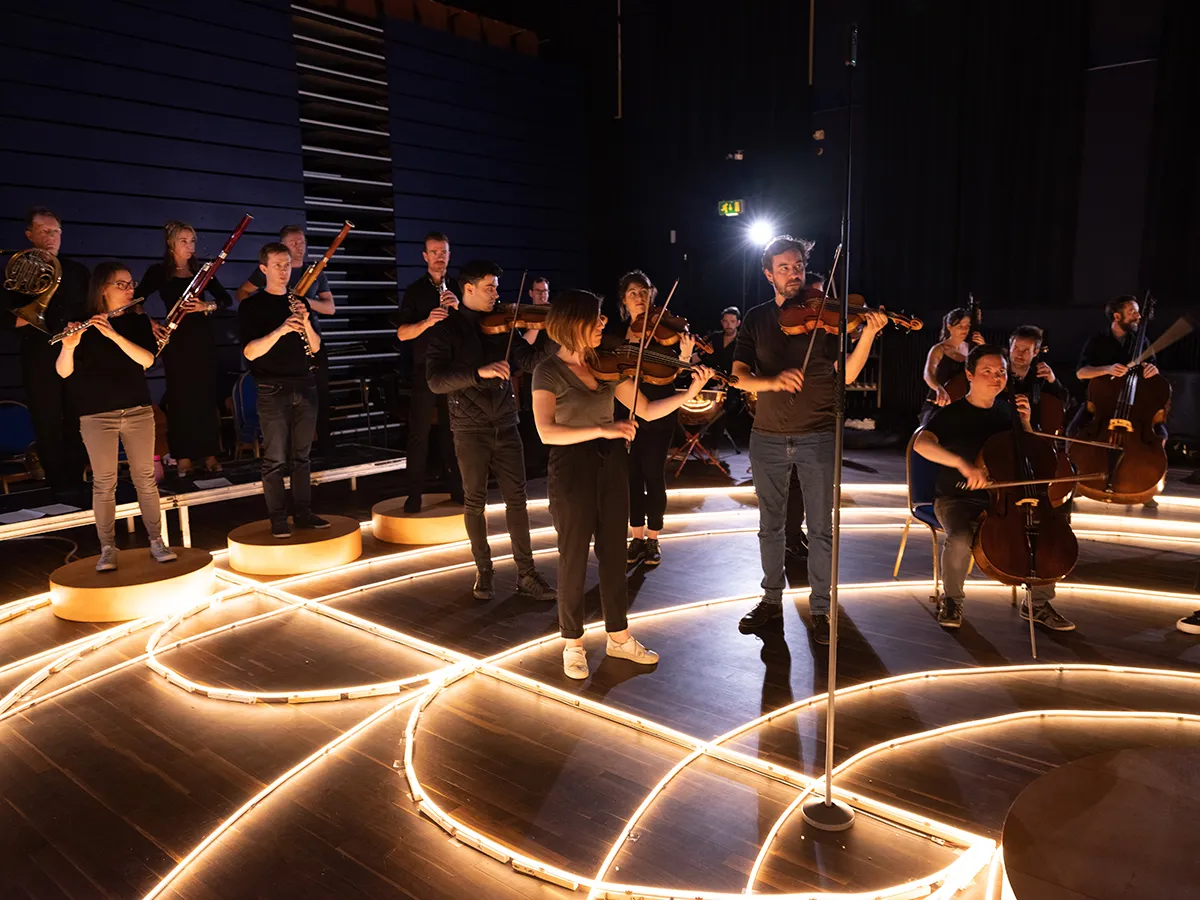Astronomy and music have a long history together, from Gustav Holst's The Planets to The Sky at Night's adoption of Sibelius's At the Castle Gate as its theme tune, and the late Sir Patrick Moore's own xylophonic musical excursions.
A new programme of music by the Aurora chamber orchestra seeks to go back even further in the history of astronomy, exploring the idea of the 'music of the spheres', as advocated by Greek philosopher Pythagoras.
This ancient concept is a product of its time: the notion that the movement of planets and moons in the Solar System produces a resonance or celestial harmony, much the same as the interweaving melodies of a string quartet.
Music of the Spheres seeks to bring these ideas and their place in the history of astronomy to audiences via pieces that operate around those themes of resonance and symmetry attributed by Greek philosophers to the workings of the cosmos.
Music of the Spheres: the programme
Max Richter - Journey (CP1919)
Beethoven - Molto adagio from String Quarter No. 8 in E minor, Op. 59 No. 2
Thomas Adès - Violin Concerto Op. 24, 'Concentric Paths'
Mozart - Symphony No. 41 in C major, K551, 'Jupiter'
The programme includes works by Beethoven and Mozart, but also a new piece by composer Max Richter inspired by the discovery of the first pulsar; a rotating neutron star that emits a regular pulse of radiation when viewed from Earth.
The concert kicks off in Canterbury on 1 June 2019, before moving on to Birmingham on 4 June and London on 5 June.
BBC Sky at Night Magazine got the chance to speak to Creative Director Jane Mitchell about the musical programme, and what it might teach us about how our ancestors viewed the night sky.

Classical music and ancient astronomy: how do the two fit together?
The concert is about exploring the idea of 'the music of the spheres' and the maths and physics behind it, but also the philosophical side and how that links to the music itself.
It’s this idea of looking for perfect numbers in the Universe and the deeper meaningful questions that Greek philosophers were obsessed with, like ‘why are we here?’, looking back to a time when astronomy and music and maths and physics were all tied up with those soul-searching questions.
We looked especially at Pythagoras’s ideas, who as far as we are aware was the first to come up with this concept of the Universe having a resonating sound.
Every heavenly object, every planet, the Sun the Earth and the Moon would always be making a sound because they’re in motion.
We’ve explored that concept, and we have a series of films and animations looking at that, explaining it and telling the stories behind it.
Then we thread through music that is related to the concept in how it sounds, or else is directly inspired by it.
Do you think the idea of the music of the spheres may be due to a belief in a Universe with a perfect, organised structure?
Yes, it’s interesting. When you’re looking at someone like Pythagoras, his ideas are really more about storytelling as opposed to being scientifically accurate.
We've certainly taken it as a storytelling concept, but from the research we’ve done it feels like Pythagoras was really searching for a connection between himself and his place on Earth, but also the expansive night sky and what he could see in it.
The story goes that he heard metal objects being hit by a blacksmith and he noticed that the smaller objects gave off a higher pitch than the larger objects, and he measured them and found they were in perfect proportion to each other.
So intervals like an octave were made by hitting two different objects, one twice as heavy as the other.
I think the sense of that really pleased him and the perfection seemed to help him make sense of his world.
It’s interesting that one of the next things he did was look up at the objects in the night sky and think "that must all make sense too".
It’s about making sense of your own world, and then looking up and projecting that idea onto what he would have called ‘the heavens’, and ultimately understanding your tiny place in the vast expanse of the Universe.
That’s certainly the concept that we have taken from it, and it’s fascinating when you then look at musicians like Beethoven, or the contemporary composer Thomas Adès, or Mozart.
They are often doing the same thing. Music is all about trying to make sense of your own place.
There’s an interesting correlation between musical intervals like an octave or a fifth, which form the very basis of so much of Western music.
They do seem to be based on very simple mathematical proportions, which you also find in the natural world.
It’s a satisfying idea to think that what is pleasant to listen to also makes the most sense mathematically.

Have you always been interested in astronomy and space, or is it something that you came to afresh as a result of this project?
Personally yes I have always been interested in astronomy. I did physics and maths up to A-Level, so for as long as I could!
I studied music at university and looked at how music used to be much more linked to core subjects like philosophy, maths and astronomy, and it was once all bound up, rather than being separate subjects.
Music is about finding your place in the world and the Universe, but we also explored ideas about music having healing qualities or having the opposite effect; things like music evoking the devil, for example.
I’ve personally always found that very interesting, so this is a nice project to be working on.
How did you choose the pieces for the concert? Was it difficult to resist selecting Holst’s The Planets?
We didn’t really want to do a ‘space-themed’ concert, although those can be absolutely brilliant.
This concert is more about the idea of searching for answers, and what we always try and do is evoke a sense of storytelling throughout.
So it might be the aesthetics of the music that ties things together, more than the titles of the pieces.
The other thing about Holst’s The Planets, which I love, is that it is for an orchestra of nearly a hundred musicians, whereas we are a smaller orchestra.
We are 40 musicians, so it is a much more intimate concert.
The Thomas Adès piece is called Concentric Paths, and the composer describes it as being made up of cycles that are circular in design.
To me it feels like you’re listening to a spinning, expanding mass and I have always pictured the motion of the stars and the expansion of the Universe when I listen to it.
That links into the idea of Pythagoras observing heavenly objects moving and spinning, and the ideas of concentric circles that were being formed at that time.
The Aurora orchestra perform Mozart's Jupiter Symphony in rehearsals
We’re doing one movement of a Beethoven late string quartet, which one of his pupils is quoted as saying he wrote after contemplating the stars and the movement of the planets.
That movement in this concert feels like the soul searching behind all these questions about the Universe.
In the second half we play Mozart’s Jupiter Symphony, which to us feels like the perfect example of a musician trying to do what Pythagoras was talking about; playing with numbers and finding perfect harmonies and proportions.
The last movement is one of the finest examples of a musician being able to make perfect maths in music, because it has a fugue subject in which Mozart manages to write up to five different melodies that fit perfectly on top of each other in lots of different combinations.
It feels like the ultimate expression of what Pythagoras was talking about.
We also commissioned a piece by Max Richter, which is about journey and searching.
It starts the concert and sets off that idea about intimate space and the idea of endless questions and voyaging into the unknown.
The Max Richter piece was written about the discovery of the first pulsar, which are stars that emit a regular pulse when observed from Earth. Does the music reflect that regular pulsation?
Yes, absolutely. There’s a very clear sense of pulse that is actually very hypnotic, and the composer builds different pulses on top of each other, but all of them very regular.
In the programme note, Richter talks about the pulsar that was first discovered, which pulses every 1.33 seconds.
I think he’s pretty accurate with his idea of what he’s trying to evoke.
The music also feels like it’s going up and up, endlessly, so it’s also this idea of searching the Universe for the answers to these questions.

We’ve noticed there appears to be a wooden structure constructed on the floor of the orchestra space. What’s the idea behind that?
We’re building a geocentric light map of the Solar System, as we think Pythagoras had seen it, on the floor where the orchestra will be.
One of the first sparks of inspiration for putting this concert together was noticing that the diagrams that you see representing music of the spheres have the Sun going round the Earth.
These diagrams look like a map of an orchestra, because in an orchestra you have a conductor at the centre, then the strings fan out and you have the wind and the brass.
We play quite a lot of the music in this programme from memory, so we have the joy of being able to stand up without having to move our music stands.
As soon as we saw the geocentric maps we thought maybe we could put the orchestra onto an actual diagram of the Solar System, and then you can play with the scales of each orbit, and the lights light up as we talk about each planet making a different sound.
It’s a really beautiful effect; we worked with a designer called Kate Wicks who used a neon flex material that you can form into any shape, and she’s managed to reproduce the drawing of the music of the spheres perfectly.

What was the idea behind performing some of the pieces from memory?
That’s something Aurora have done for quite a few years.
Musically and personally as a group of musicians, we felt drawn to it partly out of interest to see whether it was possible, but also as a way of deepening our own experience of the music.
There’s something great about arriving on the first day of rehearsals and everyone has been living and breathing the music for the past month.
It frees up everything about the process, because we all know the pieces backwards.
We can stand next to different people, and it feels much more like a group of musicians doing something together and feeling very intense about it.
It means you can make a lot more eye contact with the audience, and there’s a lot more communication going on.
We can go out into the audience and surround people, or arrive in a school and play around children in the middle of an assembly.
You can also play a lot more with lighting and visuals and the way people are placed and walk onto stage: these are things a lot of orchestras struggle with because every time you move a musician, you usually have to move a music stand.
The Max Richter piece, for example, we’re playing a lot of it in pitch black, which we can do because we don’t need to see the music!
What do you ultimately hope audiences will take from the performance?
We often come up with ideas for concerts using ideas that are external to music, but which link the music together.
It’s about hearing music in a new light and making new connections; perhaps being able to grasp onto bits of music that otherwise might be difficult to really hang on to.
By making connections and doing a bit of storytelling, but not messing around with the music itself, we find people leave after the concert having heard things from a different perspective.
Find out more about the Aurora orchestra via their website
